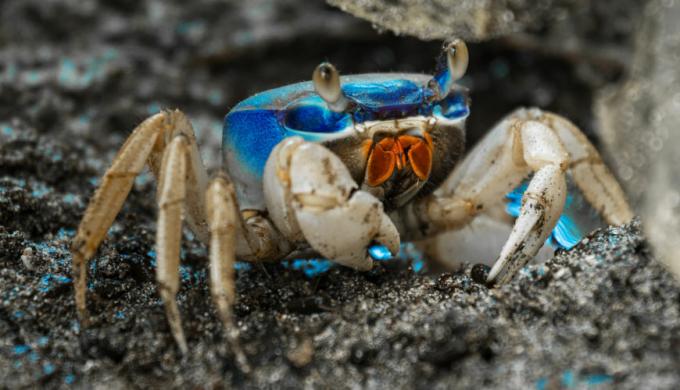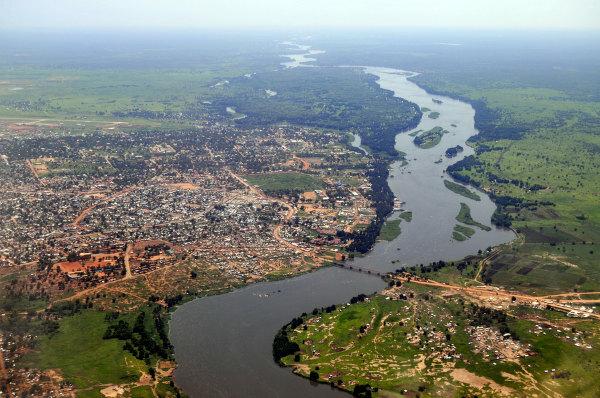Crab It's an animal invertebrate belonging to the group of crustaceans. It is characterized by having a body protected by a resistant carapace and ten legs, the first two being equipped with strong pincers, which it uses for food and defense.
There are different species of crab, and it is possible to observe species living in marine, freshwater and even species terrestrial. The diet is also quite diverse, with crabs that feed on decaying plants, animals and even animals.
Read more: Vision in invertebrates
crab summary
Crabs are arthropods of the crustacean group.
They have five pairs of legs, the first pair being equipped with pincers that help in capturing food, reproduction and defense.
They have two pairs of antennae.
They can live in salt water, fresh water and terrestrial environment.
They may have different diets depending on the species.
They are highly appreciated in human food.
what is crab
crab is a invertebrate animal belonging to the group of arthropods, more precisely the group of crustaceans
. Although the name crab is applied to different crustaceans, true crabs are those belonging to the Brachyura infraorder. There are over 6500 species of true crabs.Like lobsters and shrimps, the crab stands out for presenting two pairs of antennae and locomotor legs present on the thorax. Crabs belong to the group of decapods, ten-legged crustaceans. In crabs, it is possible to observe that the two front legs are modified and have pincers used in food capture and defense. Pincers are also used when fighting for females.
Crabs have a hardened cuticle of calcium carbonate, forming a shell resistant to predators. The carapace is wide and the body has a flattened and rounded appearance. They have a reduced abdomen that fits under the cephalothorax.
A striking feature is the form of locomotion, being observed, generally, the lateral movement. It is worth noting that crabs can slowly crawl forward, but in general, they move laterally when they want to be faster. Most crabs do not swim. In Brazil, swimming crabs are called siris.
Video lesson on arthropods
crab habitat
When we talk about crabs, we usually remember the species found in the sea. However, they can be observed, in addition to the marine environment, in environments freshwater and terrestrial.
One of the best known species of crab in Brazil is the guaiamum (guanhumi cardiomyoma). The species is observed in tropical regions along the Atlantic coast, being found in regions of mangroves and estuaries, where it builds burrows.
Read more: Consequences of habitat destruction
crab feeding
There are several species of crabs, each with a different feeding pattern. Some species are considered herbivores, while others are carnivores, feeding, for example, fishes and invertebrates. There are still species omnivorous and species butchers, which feed on decaying remains.
THE guaiamum (guanhumi cardiomyoma) is a predominantly herbivorous species, but can feed on insects, dead animals and even practice cannibalism in situations where food is scarce. THE uçá crab (ucides cordatus), in turn, feeds on leaves and seeds present in the mangrove. This species is distributed from the United States to Brazil.

Crab breeding
Crabs are animals that reproduce in a way sexual, and some particularities can be observed depending on the species studied. According to the publication “Biology, ecology and fishing of the uçá crab”, by Embrapa, during the reproductive period, crabs leave their burrows and walk on the mud in a phenomenon known as walk. Males then start to to compete by the females.
Also according to the publication, males and females then open their abdomens and position themselves in front of each other. The male then introduces his reproductive apparatus into the female's genital orifice and mating takes place. Females externalize the egg mass, which is trapped in their abdomen until they hatch. According to Embrapa, the female uçá crab can produce up to 183,936 eggs in a single spawn.
Read more: Reproduction of animals
Crabs and humans
Crabs are invertebrates of great economic importance for the human being, being an animal common in coastal cuisine. One of the species that are part of the human diet is the guaiamum, much appreciated in the cuisine of the Nonortheast in Brazil and an important source of income for the region's population.
It is important to point out that crabs are a great source of energy, as they have great nutritional value. However, it is important to pay attention to their consumption, since many crustaceans can cause allergic reactions in some people.


